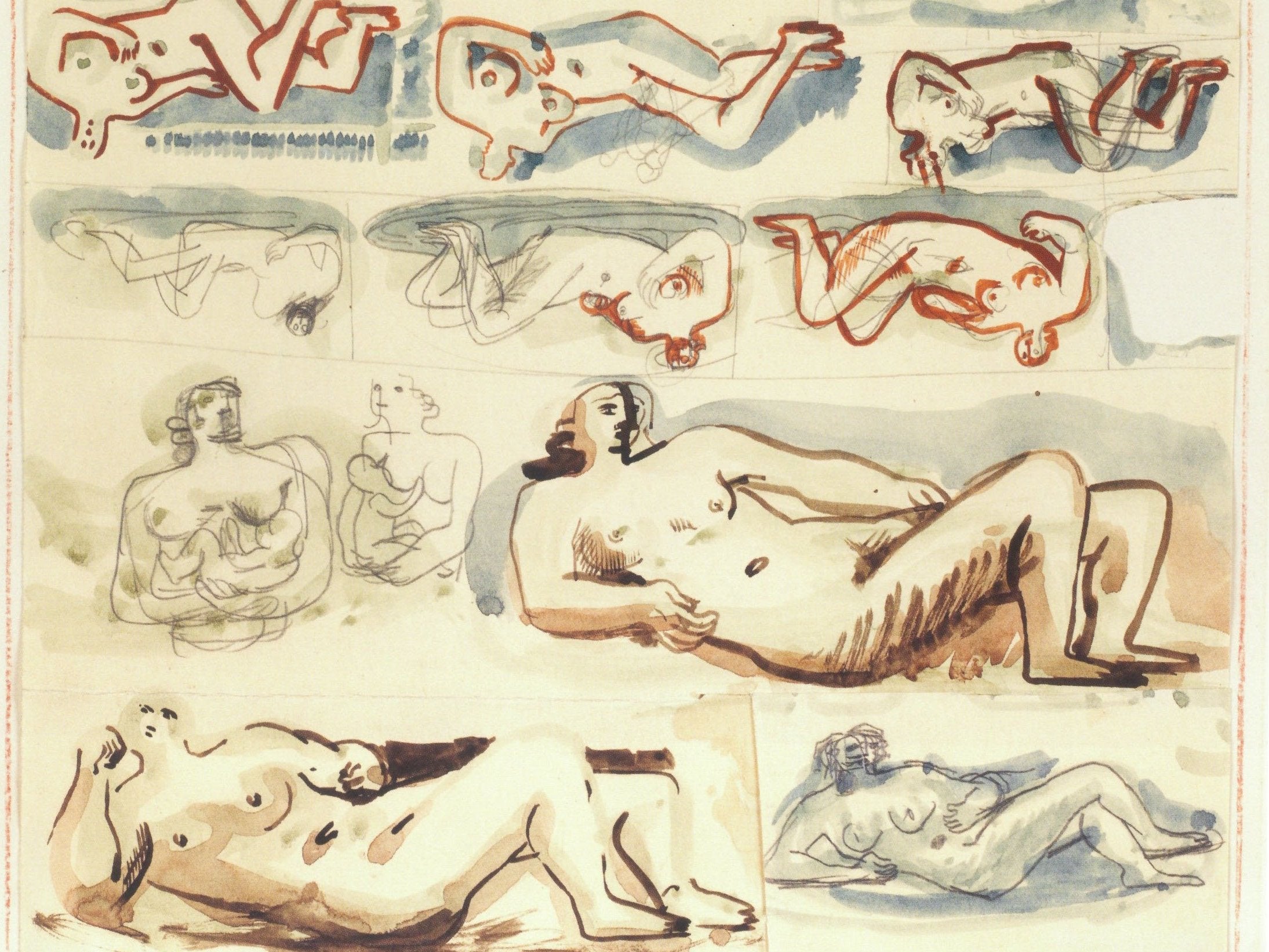Authentic Henry Moore watercolour sketch discovered among Nazi art hoard
Artwork was among 1,500 that had belonged to 'degenerate art' dealer Hildebrand Gurlitt

Your support helps us to tell the story
From reproductive rights to climate change to Big Tech, The Independent is on the ground when the story is developing. Whether it's investigating the financials of Elon Musk's pro-Trump PAC or producing our latest documentary, 'The A Word', which shines a light on the American women fighting for reproductive rights, we know how important it is to parse out the facts from the messaging.
At such a critical moment in US history, we need reporters on the ground. Your donation allows us to keep sending journalists to speak to both sides of the story.
The Independent is trusted by Americans across the entire political spectrum. And unlike many other quality news outlets, we choose not to lock Americans out of our reporting and analysis with paywalls. We believe quality journalism should be available to everyone, paid for by those who can afford it.
Your support makes all the difference.An authentic watercolour sketch by the British 20th-century sculptor Henry Moore has been identified among a Nazi art hoard housed in the Museum of Fine Art in Bern in Switzerland.
The artwork was among 1,500 works discovered in Germany in 2012 that had belonged to art dealer Hildebrand Gurlitt.
He bought the piece after it was confiscated from a German museum in the 1930s for being what Adolf Hitler classified as “degenerate art”. As the Nazi leader sought to consolidate power in Germany he set out to purge the country of any modern progressive art.
The discovery about the sketch was made following an investigation on an episode of BBC One programme Fake Or Fortune?
A document was found that proved the museum from which Moore‘s sketch was taken had received it from the artist himself, proving that the piece was not looted.
The sketch has been estimated to be worth up to £70,000 due to its rich and emotive history. It will be now be displayed in the museum in Bern.
“This fascinating early work from the late 1920s marks a moment when Moore broke onto the international stage said one of the programme's presenters, art expert Philip Mould. “He was later to become world famous. Not only do we now know it is totally genuine, but it has been cleansed of the evil prospect that it was looted Nazi art which will allow Bern to once again display it to the public.”
Moore, born 30 July 1898 in Castleford, Yorkshire, is best known for producing semi abstract bronze sculptures.
He gave away many of his sculptures on the condition that they be displayed in public places. These included a reclining figure for outside the Paris Unesco building in 1958 and an abstract bronze sculpture “Knife Edge Two Piece 1962-65” which is on display in College Green, Westminster.
Many of his sculptures depict abstractions of the human figure, typically mother-and-child or reclining figures. Some experts have likened his reclining figures to the landscape and hills of his birthplace in Yorkshire.
In 1977, Moore established the Henry Moore foundation, for the education and promotion of fine arts.
His pieces are displayed publicly around the world including London’s Kew Gardens and outside the Hebrew University of Jerusalem.
Press Association
Join our commenting forum
Join thought-provoking conversations, follow other Independent readers and see their replies
Comments